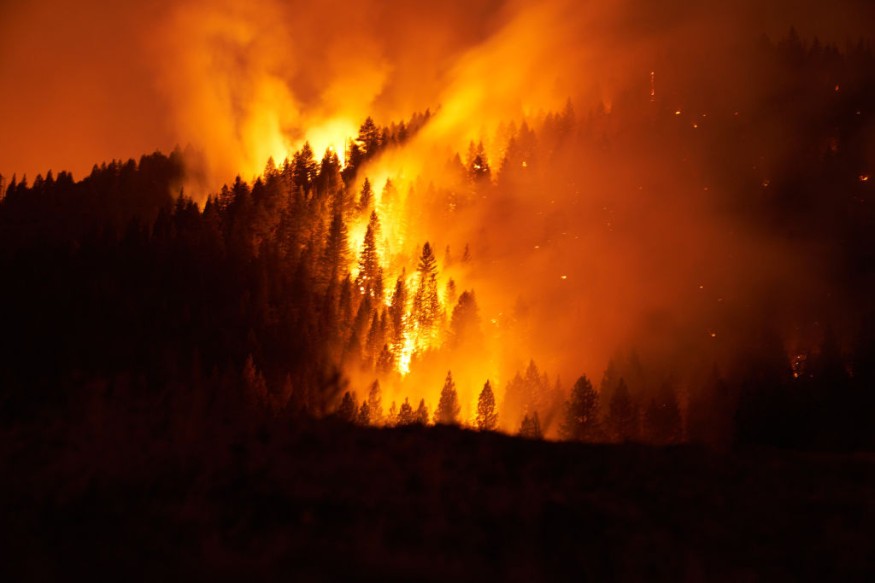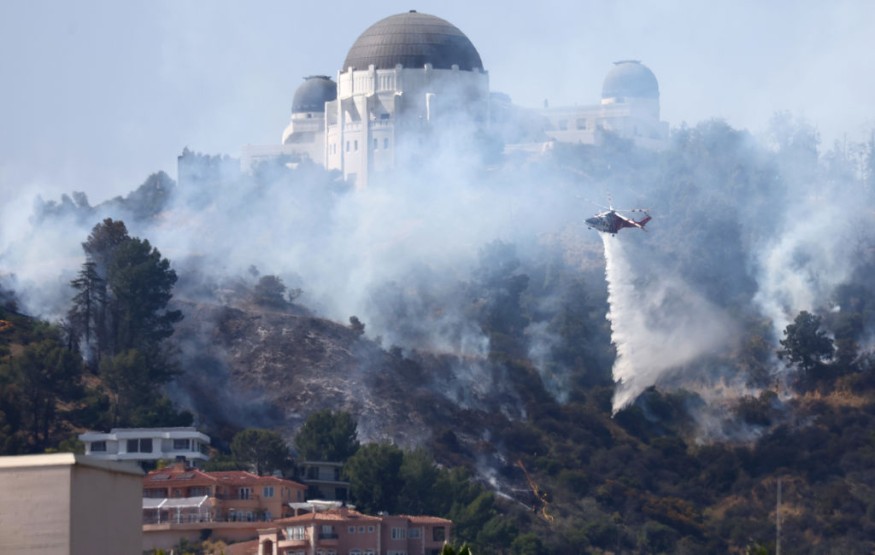The combination of tropical moisture and an offshore storm will increase thunderstorm activity throughout parts of California on Wednesday and Thursday. While a couple of the storms may wet certain places, AccuWeather meteorologists warn that most of the storms will have little or no rain and may cause a rise in wildfires.

Driest Period in 1,200 Years
According to a recent peer-reviewed study published in Nature Climate Change, the western United States is experiencing the driest period in at least 1,200 years. California has been plagued by severe drought for much of the last decade, with at least eight of the last ten years resulting in below-average rainfall. This has frequently prompted state and municipal officials to impose water restrictions in several towns and cities. To alleviate water shortages, state officials again turned to water reactions last month.
The most recent data from the US Drought Monitor showed that about 98 percent of California was in extreme drought or worse as of mid-June.
A brush fire in Los Angeles' Hollywood Hills burned at least two acres on Monday. There were no evacuations ordered, but they did occur the next day. The Los Angeles Fire Department dispatched numerous planes to assist in containing the blaze. It was burning near the famed Hollywood Sign.
Edgewood Fire

The Edgewood Fire has been burning since Monday in Redwood City, California. Evacuation orders have been lifted for the area; a review of the orders is scheduled for Tuesday evening.
In the aftermath of the conflagration, more than 11,000 San Francisco Bay Area electricity users lost power, with 25 acres destroyed as of 6 p.m. Tuesday, PDT. One firefighter was hurt while attempting to extinguish the fire and was taken to a nearby hospital by ambulance. The firefighter's condition is unclear. At least four aircraft assisted in the battle against the Edgewood Fire, although the flames remained uncontained as of 6 p.m. Tuesday, PDT.
Slim Chances of Rainfall
Rainfall opportunities are limited throughout the dry season, which lasts from spring to summer and early autumn. The average rainfall in Downtown Los Angeles from June 1 to September 30 is less than 0.25 inches. During the same four-month period, the Sierra Nevada receives an average rainfall of 1-2 inches.
One such chance for rain will arrive before the end of the week, with an increase in patchy shower and thunderstorm activity forecast through Wednesday night. Storm activity will then decrease from Thursday through Friday.
Farther east, southerly breezes have been blowing across the inner Southwest over the previous few days. The North American monsoon is defined as a change in wind direction from west to south. The increase in moisture has caused many showers and thunderstorms in several areas of the region.
Downpours have been falling in New Mexico over the last three days, which will help with firefighting efforts. According to the Southwestern U.S. Coordination Center, more than 864,000 acres have burnt in New Mexico alone, compared to an average of 270,000 acres that generally catch fire over the year. As of June 20, wildfires in California had destroyed around 17,000 acres.
California has been spared some of the deadliest wildfires in the Southwest in recent months, with large flames smoldering in New Mexico and Arizona, but that may change.
"Rainfall totals from the setup this week will be low," AccuWeather Senior Meteorologist Heather Zehr said. Rainfall is anticipated to be less than 0.25 inch and may amount to a few hundredths of an inch where it falls.
According to Zehr, the possibility of limited rainfall in California will be caused by a meteorological system other than the monsoon pattern. "A weak storm dropping southward off the Pacific coast will allow some precipitation from Tropical Rainstorm Blas to be drawn northward," Zehr explained.
Blas was a Category 1 hurricane that spun off the coast of Mexico early this month and lost wind energy during the weekend. On Monday, the former hurricane was reduced to a patch of clouds and showers over the Pacific near Baja California, Mexico.
"A few thunderstorms that form as a result of the increase in humidity may deliver brief downpours, but there is a chance of repeated lightning strikes distant from the rains, where sparks might cause wildfires to ignite," Zehr warned.
AccuWeather meteorologists say dry vegetation can readily ignite when downpours do not quickly materialize.
Because much of the winter rain and mountain snow totals were substantially lower than typical, the vegetation is much drier than usual for this time of year. While the northern region of California received a lot of rain and snow in December, precipitation was not as heavy further south. Storms were few for the rest of the winter, and rain and mountain snow occurrences were scarce in the spring.
In addition to the risk of wildfires starting during the intermittent thunderstorm activity, certain flying dust occurrences can significantly decrease vehicle visibility. In rare instances, enough rain can fall rapidly enough to cause flash floods and debris flows. These dangers will be more prevalent in cities and areas with recent burn scars.
Weather Forecast

A shower or thunderstorm is possible as far north as Reno, Nevada, San Francisco, and Sacramento, although rain is more likely in Los Angeles, San Diego, and Palm Springs, California. A light shower or thunderstorm is also possible in Las Vegas.
Experts advise motorists to allow for additional stopping space and limit their speed during any downpour since the mix of water and oil on the roadways can create exceptionally slippery conditions.
Related Article : Utah Faces an Environmental Catastrophe as the Great Salt Lake Continues to Dry Up
For more environmental news, don't forget to follow Nature World News!
© 2025 NatureWorldNews.com All rights reserved. Do not reproduce without permission.





